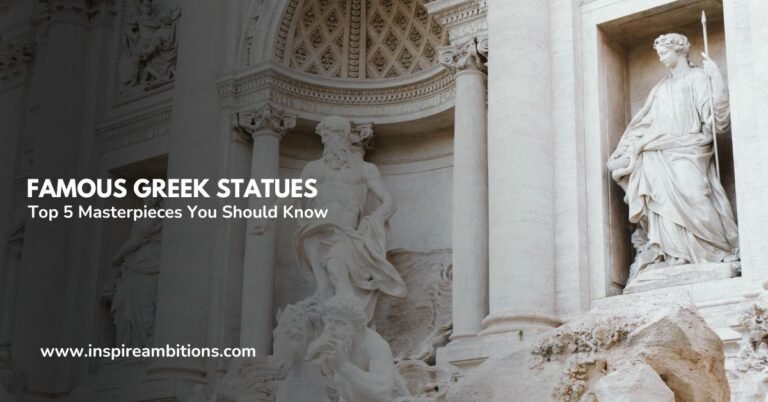Evil Greek Gods – Exploring the Dark Side of Olympus
Greek mythology is filled with fascinating tales of gods and goddesses, but not all of them were benevolent beings. Some deities were known for their malevolent nature and destructive powers.
The ancient Greeks worshipped a pantheon of gods that included both benevolent and malicious deities, with some being particularly feared for their evil tendencies.
You might be surprised to learn that even well-known gods like Zeus had a dark side. While often portrayed as the wise ruler of Olympus, Zeus was also known for his jealousy, wrath, and tendency to punish mortals harshly. Other deities, like Eris, the goddess of discord, deliberately sowed chaos and conflict among both gods and humans.
The underworld gods were often associated with death and darkness, inspiring fear in the hearts of ancient Greeks. Hades, ruler of the underworld, was not necessarily evil but was greatly feared due to his domain. His wife Persephone, though initially a goddess of spring, became a formidable queen of the underworld in her own right.
The Pantheon of Evil Greek Gods
Greek mythology features a diverse cast of deities with complex personalities and motives. While not inherently evil, many gods exhibited traits and actions that could be considered malevolent or destructive.
The Reign of Zeus and Hera
Zeus, the king of the gods, ruled Mount Olympus with his wife, Hera. Despite being the god of justice, Zeus often acted impulsively and selfishly. He frequently cheated on Hera, leading to numerous conflicts and vengeful acts.
Hera, the queen of the gods, was known for her jealousy and wrath. She punished Zeus’s lovers and their offspring, often in cruel ways. Her actions sometimes harmed innocent mortals caught in the crossfire of divine drama.
The couple’s turbulent relationship and abuse of power affected both gods and humans alike. Their rule was marked by favouritism, manipulation, and occasional tyranny.
Titans: The Precursors to The Gods
Before the Olympians, the Titans ruled the cosmos. Cronus, their leader, was particularly ruthless. He devoured his children to prevent them from overthrowing him, as he had done to his father, Uranus.
Prometheus, though often seen as a benefactor to humanity, faced severe punishment for his actions. Zeus chained him to a rock where an eagle ate his liver daily as retribution for giving fire to humans.
The Titans’ era was characterized by chaos and brutality. Their defeat by the Olympians brought a new order, but not without its own set of challenges and conflicts.
The Underworld Deities
The realm of the dead housed some of the most feared deities in Greek mythology. Hades, the ruler of the underworld, was often misunderstood as evil due to his domain. While stern, he was generally fair in his judgments.
Persephone, Hades’ wife, played a crucial role in the cycle of seasons. Her abduction by Hades caused great suffering as her mother, Demeter, goddess of harvest, neglected the earth in her grief.
Other underworld entities like Cerberus, the three-headed guard dog, and the Erinyes (Furies) who punished wrongdoers added to the fearsome reputation of the underworld. These beings enforced cosmic order through methods often perceived as cruel or terrifying by mortals.
Gods of War and Conflict
Greek mythology features several deities associated with war, strife, and conflict. These powerful gods and goddesses played crucial roles in shaping battles, influencing mortal affairs, and sowing discord among both humans and immortals.
Ares, the God of War
Ares, the Greek god of war, embodied the brutal and violent aspects of conflict. You might picture him as a fierce warrior, always eager for battle and bloodshed. Ares often rode into combat on a chariot, wielding a sword and spreading terror among mortals.
Despite his status as an Olympian, Ares wasn’t well-liked by the other gods. You’d find that even his parents, Zeus and Hera, often disapproved of his bloodthirsty nature. In the Trojan War, Ares initially supported the Trojans but was wounded by Diomedes with Athena’s help.
Ares’ children included Deimos (Terror) and Phobos (Fear), who often accompanied him into battle. These fearsome offspring personified the dread that warfare instils in soldiers and civilians alike.
Eris and the Seeds of Discord
Eris, the goddess of strife and discord, played a pivotal role in sparking conflicts. You might know her best for instigating the events leading to the Trojan War. At a divine wedding, Eris tossed a golden apple inscribed “For the Fairest” among the goddesses, triggering a dispute that ultimately resulted in the abduction of Helen by Paris.
This goddess delighted in causing chaos and disagreements. You’d find her influence in arguments, rivalries, and jealousies among both mortals and immortals. Eris’ actions often set more significant events in motion, demonstrating how tiny seeds of discord could grow into full-blown conflicts.
Divine Companions in Arms
Ares and Eris weren’t the only divine beings associated with war and conflict. You’d encounter several other deities who played significant roles on the battlefield:
- Enyo: Goddess of war and destruction, often depicted alongside Ares
- Athena: Goddess of strategic warfare and wisdom
- Nike: Goddess of victory, frequently accompanying Athena
These divine companions brought different aspects of warfare to the forefront. While Ares represented the brutal side of combat, Athena embodied strategic thinking and tactical prowess. You’d find that Greek soldiers often prayed to both deities, seeking a balance of strength and wisdom in battle.
The Manifestations of Evil and Suffering
Greek mythology portrays evil and suffering through dark deities and divine retribution. These forces shape the mortal world, bringing chaos and misery to those who cross their paths.
Nyx and Her Dark Progeny
Nyx, the primordial goddess of night, stands as the mother of numerous malevolent beings. Her children embody various forms of darkness and misfortune. Thanatos, the personification of death, claims mortal lives when their time comes.
The Keres, spirits of violent death, haunt battlefields and plague-ridden cities. They revel in bloodshed and misery. Oneiroi, the gods of dreams, send both prophetic visions and nightmarish terrors to sleeping mortals.
Moros, the embodiment of impending doom, represents the inescapable fate that awaits all living creatures. These dark entities work in tandem, weaving a tapestry of fear and suffering throughout the mortal realm.
Curses and Punishment: Justice or Vengeance?
Divine punishment in Greek mythology often blurs the line between justice and vengeance. The Erinyes, also known as the Furies, pursue and torment those who commit heinous crimes, especially against family members.
Their relentless pursuit of wrongdoers can be seen as a form of cosmic justice. Yet, their methods are often cruel and disproportionate to the original offence. Nemesis, the goddess of divine retribution, ensures that hubris and excessive good fortune are eventually balanced by misfortune.
You might wonder if these punishments truly serve justice or merely perpetuate a cycle of suffering. The ancient Greeks grappled with this question, recognizing the complex nature of divine judgment and its impact on mortal lives.






